Izet Masic: The Most Influential Physicians in the Development of Health Care in Bosnia and Herzegovina (article 3 of 3)

THE MOST INFLUENTIAL PHYSICIANS IN OTTOMAN AND AUSTRO-HUNGARIAN PERIOD
JOZEF KECET (KOETSCHET) (1830-1898)
Jozef Kecet (Joseph Koetschet) worked in Mostar and Sarajevo as the personal physician of Omer Pasha Latas, and later of Topal Sherif Osman Pasha, the Ottoman governor of Bosnia (1861-1869) (Figure 3). Born on 14 February 1830 in Delémont, Switzerland. Studies were completed in Bern, Vienna, and Paris. After completing medical school he went to Turkey, where he worked as a Turkish military physician in the Crimean War (1853-1856).
Accompanied by a controversial Omer Pasha Latas, Kecet came to Bosnia, where at one time worked as a Turkish military physician and as a personal doctor of Topal Sherif Osman Pasha. It is known that he also tried to deal with diplomacy, as the Austro-Hungarian officer, and that he was offered the services of the personal physician of the Montenegrin prince, which he refused with a large dose of diplomacy.
Accompanied by Omer Pasha Latas returned to Turkey, and after the death of Omer Pasha in 1871, Kecet came into conflict with the military powers in Istanbul and he returned to Bosnia and Herzegovina, in the city of Mostar, where at one time worked as the city doctor.
He left Mostar after several years, and in 1875 he worked in Sarajevo as the city physician. He died on 22 July 1898 in Sarajevo and was buried in the cemetery Kovaci. He had two sons, Aleksandar, born 10 May 1862, and Teofil Ladislav Kecet (Theophil Koetschet), born 29 April 1864, which graduated in medicine in Vienna.
An important and interesting fact recorded in the literature is that Vakuf’s hospital in Sarajevo, opened on October 8th of 1866, in the year.
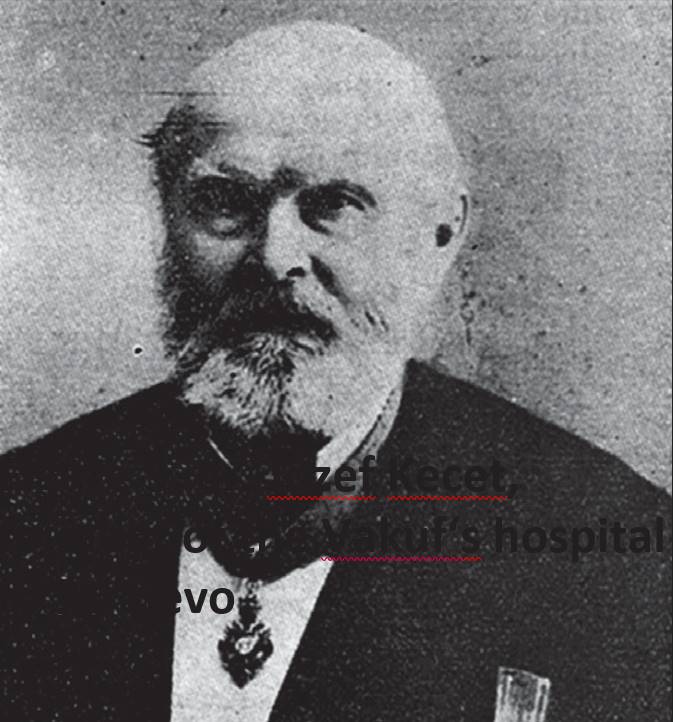
1791 Dr. Karel (Karl) Bayer
(1850-1914), who was Director of Vakuf’s hospital from March 1885 (and had also private surgery in Sarajevo at his flat in Pruscakova street 17)) carried out the earliest recorded neurosurgical operations for epilepsy (on three patients with post-traumatic epilepsy) (29-31, 35).
All three patients had suffered from epileptic fits caused by bone fragments in the brain. The operations consisted of craniotomy, removing the bone fragments, and closing the dura mater. The patients were reported cured (31). Dr. Bayer was a member of the State Health Council from 1896 and also the first President of the Society of physicians of Bosnia and Herzegovina (35).
MEHMED SERBIC (1847-1918)
Mehmed Serbic Sami was born in Sarajevo in 1847 where he finished high Ruzdi. After Ruzdi went to Instanbul and remained there for 12 years. In that period graduated medical studies in 1873 at “Ecole de Medicine”, which opened in 1843 in Istanbul (Figure 4). He has diplomas in Turkish and French. In 1874 he was appointed as a physician in Tuzla, Zvornik province, and worked till 1866 when Hastahana closed and Dr. Serbic continued to work in a newly opened hospital. In 1879 he notified a diploma from Vienna University. As a physician, he followed the Bosnian pilgrims to Mecca in 1892, when 120 pilgrims 59 of them died from the plague. As a physician, he participated in the war against the Austro-Hungarian 1875-1876, around Bijeljina.
He is the founder of Kiraethana (Library) in Tuzla 1891 where he was Director until 1914. A regular member of the Medical Association of the Croatian Kingdom and Slovenia became on 1 January 1896. He had spoken Turkish, Arabic, Persian, French, Greek, and German language. In the Turkish language, he had written in 1869 the book “Kavanini Dzerahin” – “Surgery regulations” as the first edition manuscript of treating wounds. Practically it was the first book about surgery in B&H, containing 369 pages in 24 chapters, and which included large sections of the surgery.
To him and other doctors this was an outstanding guide. His daughter Dr. Hiba Serbic Ramadanovic was the first Muslim woman who graduated in medicine in Belgrade in 1939. The first Muslim woman physician in B&H was Sevala Iblizović, who graduated from medicine in Zagreb in 1931.

JULIJE MAKANEC (1854-1891)
Julije Makanec comes from the Croatian noble family Makanec. After Baron Jelacic abolished celibacy, the family sold all their possessions and moved to Zagreb, and later to Bosnia and Herzegovina Travnik and Sarajevo) (Figure 5). Dr. Julije Makanec II was a physician and a member of the City Council of Sarajevo.
He was one of the experts who came to Sarajevo in 1879 to be the chief city pharmacist, then became a temporary district physician, and was also a police physician. In 1884 he founded the „Bosnische Post“ magazine and opened a printing house in his house on Kulovica Street under the name of
„Spindler and Loschner“ (his partner and his wife, by the birth of Loschner). Later he sold the magazine to the first editor of Eugene Topffer, and the press gave Spindler a lease.
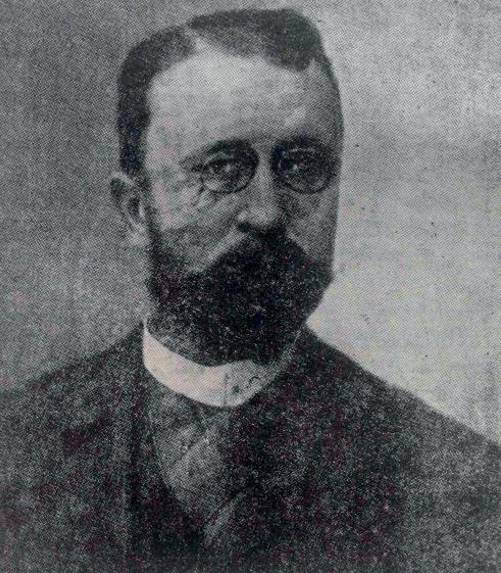
Through the „Bosnische Post” – “Bosanska posta”) magazine, a public call was sent to interested parties to support the establishment of a special Museum Society for Bosnia and Herzegovina that would work on preparations for museum establishment. To prevent the destruction of archeological antiquities and their relocation from the country in 1880 he founded the first Archaeological Society.
Dr. Makanec was a long-term Director of the Society. He invited expert (in 1886) Dr. Ciro Truhelka, archeologist of the Museum of Arts and Crafts in Zagreb, to come to Sarajevo and help in the organization of the Museum. Truhelka will later be profiled as one of the most eminent researchers in BiH, but will also be the long-term director of the National Museum. Delighted with this project, the City Administration, supported by H.E. Benjamin Kalaj (Kallay), assumes funding for the Archaeological Society, which in 1888 opened the first museum in BiH with the help of Kosta Hörmann, Karl Pač (Patsch), Ćiro Truhelka and Vejsil Ćurčić.
The museum was initially housed in the Gazi Husref-bey palace building. The Society then gathered around 500 members and immediately started working not just for collecting and studying the antiquities, but also for exploring nature. When the National Bank of Sarajevo was founded, it became a member of the management of the first and second years since its foundation.
The exchange office of Josip Loschner was also one of the initiators of the deceased, and in the later years, he was reluctant to take a bathing place in Kiseljak to obtain a lucrative voice in and out of the country. From these short lines, Dr. Makanec, apart from his medical attendance, has been living actively in municipal, cultural and economic affairs, gaining a great reputation and respect.
As a doctor, he created a friendly social position for himself, as rarely one of the Austro-Hungarian citizens. His scientific education, besides medical education, was extensive. Apart from his mother’s language, he spoke several foreign languages, and also Turkish. He was a man of his own mind, objective in mind, full of different ideas. Dr. Julije Makanec died of an illness in 1891 in Jeddah (Džeda), where he was a physician of Bosnian Hajja’s on a pilgrimage to Mecca. Makanec was only 37 years old (4-6).
TEODORA KRAJEWSKA (1854-1935)
Teodora Krajewska (called Dr. „Quine of Bosnia“), was a Polish-born Austro-Hungarian physician, writer, and teacher. Teodora was born in Warsaw in 1854, then part of Russian Poland (Figure 6). She left Warsaw in 1883, traveled to Switzerland, and enrolled in the University of Geneva. Krajewska first studied physiology, becoming the first female teaching assistant in the university’s history, and then took up medicine.
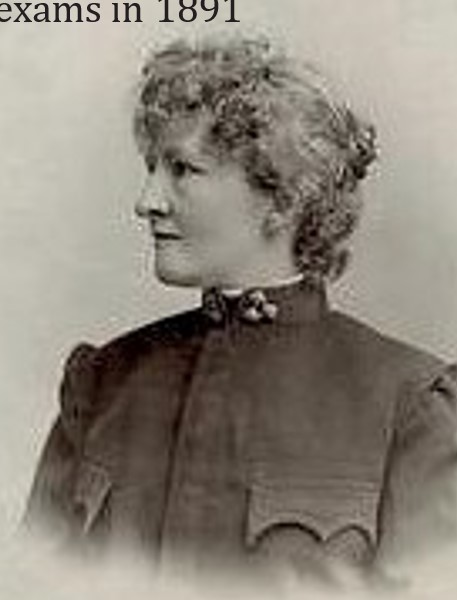
Krajewska passed her final exams in 1891 and received an award for her doctoral dissertation the following year, but found that she could not obtain the nostrification of her diploma or practice medicine in her homeland (5, 34). In 1892, she was hired by the authorities of Austria -Hungary to work as a public health official in Bosnia and Herzegovina.
One of the first women to practice medicine in Bosnia and Herzegovina and Austria-Hungary, Krajewska mainly treated Bosnian Muslim women, whom she regarded as susceptible to particular health problems. Due to the specific health situation in the country at the end of the Ottoman and Austro-Hungarian period beginning, there was a need for the involvement of women physicians, who are required to have doctors in general medicine and a good knowledge of the Bosnian language.
At that time, women could only study at medical schools in Switzerland, and in Vienna in the early twentieth century, 1901 the study of medicine has become available in Vienna for women. The State Government had intended to systematize the place of women doctors in a hospital in Sarajevo, seeking to be appointed two women students to the Faculty of Medicine in Zurich (34). If these measures proved useful, place the physician would be entrusted to women and doctors in other places. The circle of women candidates was narrowed down to Czech and Polish women (34). Prejudice against them was enhanced because of the political situation. Their task was to offer free medical help and advice to women who have just birth and their patients in the home or clinic. These two physicians were pioneers in scientific research activities in Bosnia and Herzegovina.
Krajewska wrote detailed notes about the state of women and Muslim customs. These writings, published in 1989, reveal the patronizing attitude towards Muslims that was common in the era. Krajewska stayed in Bosnia after the collapse of Austria-Hungary but the loss of eyesight forced her to retire in 1922. In 1928, she moved back to Warsaw, a decision she regretted, where she died. Austro-Hungarian districts of Bosnia and Herzegovina.
Krajewska was first responsible for the towns in the district of Tuzla and then for those in the district of Sarajevo. Teodora Krajewska was named the public health official (Amtärztin) of the District of Tuzla with the rank of captain by the decree of 28 November 1892. In order to perform obstetric and gynecological procedures, she undertook training in a clinic in Vienna. Women could not study or practice medicine in Austria-Hungary at the time, but exceptions had to be made for Bosnia and Herzegovina, where Muslim women refused to be treated by male physicians. Krajewska was thus not only one of the first female physicians in Bosnia and Herzegovina but in Austria-Hungary as well. Seven women in total were employed to treat Bosnian women; Krajewska was one of the three Russian citizens and one of the two ethnic Polish, including Bohuslava Kecková. Before assuming her office, Krajewska had to take Austro-Hungarian citizenship.
She succeeded Anna Bayerová, a Czech, who had resigned shortly after her appointment due to frequent disagreements with her military superiors. Bayerová was unwilling to care predominantly for Bosnian Muslim women, as her superiors had expected, while Krajewska embraced the task (34). Krajewska’s arrival in Tuzla in March 1893 was announced by the town crier. She was dismayed to find “these marvelous Slavic women covered by veils”. Krajewska learned Serbo-Croatian quickly. She usually rode a Bosnian pony on her visits to remote mountain villages but had to travel by foot when the winters were too severe for the horse. The demand for Krajewska’s services was such that the Austro-Hungarian authorities soon employed Bohuslava Kecková, another Polish, who took up the post in Mostar. She returned to Warsaw, now the capital of Poland, in 1927. She found that the city had changed immensely and she did not feel at home there anymore. She had been one of the best-known and most respected people in Sarajevo, but only an anonymous old woman in Warsaw.
GEZA KOBLER (1864-1935)
Geza Georg Kobler, born on 3 June 1864 in Osijek in Slavonia. He studied in Vienna and graduated in 1887. He worked as a secondary physician and an assistant at clinics Bamberger, Mexnert, and V. Schrotter (Figure 7). In 1894 was invited to Sarajevo to act as the Head physician (Primarzt), doctor of Internal medicine, and Director of the newly established Landesspital on July the 1st of 1894 (5, 6, 31).
In 1911 he returned to Vienna as a medical and veterinary officer of the Ministry of Internal Affairs, and with that duty, in 1919 he retired.
Upon his return to Vienna, a time worked as a medical specialist with the Commission for the disabled and as a member of the Council of doctors of the Provincial Government of Lower Austria. His scientific work is related to internal medicine, pulmonology, and medical chemistry, especially in blood diseases, kidney diseases, infectious diseases, and public health.
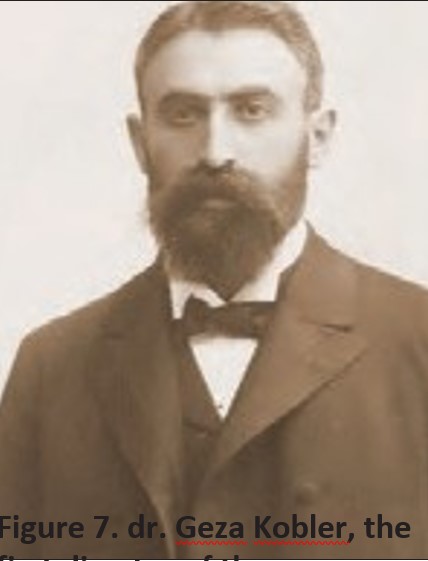
Regardless he published books: “A foreign body in bronchi and the effect caused by these states”, Vienna, 1895, “Quarantine – a question in the international sanitary legislation“ from 1898, “Surles quarantains dans les Royers d’epidemies”, Paris 1900. In 1903 he chaired in Sarajevo Congress of the German Society of Dermatology. In 1910 in the “Annual of Landesspital”, as Head physician, Dr. Kobler reported that public health in B&H was approaching the ideal of an entirely “nationalized” public health system efficient combating of epidemic and endemic diseases in B&H was more advanced than every else in the Monarchy (5). He passed away in Vienna in 1935.
JOSEF VON PREINDLSBERGER (1863-1938)
Josef Preindlsberger (von Preindlsperg) was born on 6 March 1863 in Vienna, where he studied and graduated in 1887. His education was acquired in clinics and wards of the Vienna General Hospital. One time was a Weinlechner assistant. From 1893 to 1919 he worked as chief physician of the Department for surgery of the State Hospital (Landesspital) in Sarajevo (5, 6, 27, 31) (Figure 8). As a perfect surgeon and assistant of famous Vienna professor Billroth, he has had a great reputation in Sarajevo. One important fact from February 1899 (recorded in “Bosnishe Post”) was written that dr. Preindlsberger tested X-ray equipment in Sarajevo on one young boy with a wounded chest.

It was only four years after the discovery of X-rays by Wilhelm Conrad Roentgen’s Yrays in 1895. After the war, he had to leave Bosnia and has since been residing in Vienna. His scientific papers related to various fields of surgery, especially urological surgery. He has released a publication entitled “Treatment of tuberculosis of joints“, Vienna, 1894, and over 40 other scientific papers, most of them in “Godisnjak Zemaljske bolnice u Sarajevu” in the German language.
He married in 1896 Milena Brozovic, who was the first woman journalist in BiH and the first journalist a professional in BiH at all, the first woman’s editor, and the first woman publisher in B&H. In addition, in 1889 she became the first female member of the Anthropological Society of the Habsburg Monarchy in Vienna. Therefore, for the women’s cultural history of Bosnia and Herzegovina and the female question, Milena Mrazovic von Preindlsberger is extremely important. In the same year (in 1896) she married a doctor of the Landesspital in Sarajevo, Dr. Josef Preindlsberger, leaving the „Bosnische Post“ department and turning to write books and texts for various European newspapers. She wrote about all the important events such as the annexation of B&H, and the murder of the H.E. Franz Ferdinand by Gavrilo Princip. In 1900, the book „Bosnisches Skizzenbuch“ was published in Innsbruck, and in 1905, also in Innsbruck, „Bosnische Volksmaerchen“, containing 15 folk tales that she chose as the most beautiful of this large collections.
Illustrations for the book were then made by the famous Ewald Arndt. Milena Mrazovic has written an interesting story from the first days of the occupation of Sarajevo under the title „Grabesfenster“, The new book was a great book written „Bosnische Ostbahn“ (Wien, 1908) and eventually again „Bosnisches Skizzenbuch“ (Dresden, 1909). The Roman of the dervish life of the Baptist Order remained unfinished. In addition to the excellent sound of the piano, Milenina’s artistic activities included composition al compositions that moved within the framework of small format piano arrangements. Her compositions are the earliest available traces of compositional practice in Bosnia and Herzegovina.
LEOPOLD GLUCK (1854-1907)
Leopold Gluck was born in 1854 in Novi Sad. He studied high school and University in Cracow. One time he was a student and professor of Hebras Zenels in Vienna. In 1881 has been appointed by the Provincial Government of Bosnia and Herzegovina as district doctor in Prnjavor (Northern Bosnia), and in the 1883 year for the district physician in Travnik (5, 6)
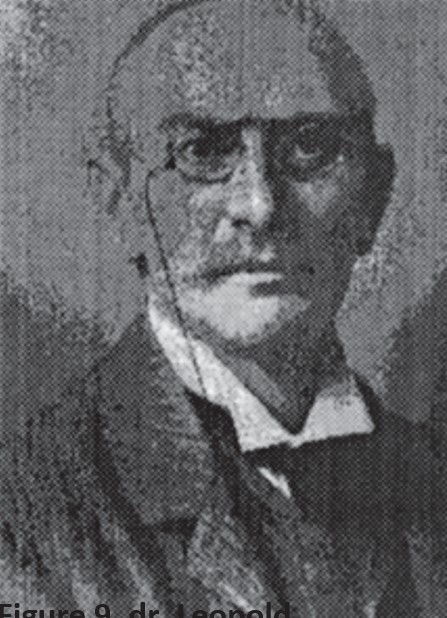
(Figure 9). Since 1886 he worked as a physician of the Prison in Zenica and in 1894 the chief physician of the newly established Dermatology-venerology Department of the State Hospital (Landesspital) in Sarajevo. From 1901 he was appointed director of the eponymous hospital and remained in that position until his death in 1907.
OTTO VON WEISS (1857-1901)
Otto von Weiss was born on 23 October 1857 in Graz as the son of a local historian. He graduated from his studies in his hometown in 1880 and then worked as an assistant in anatomy in Graz.
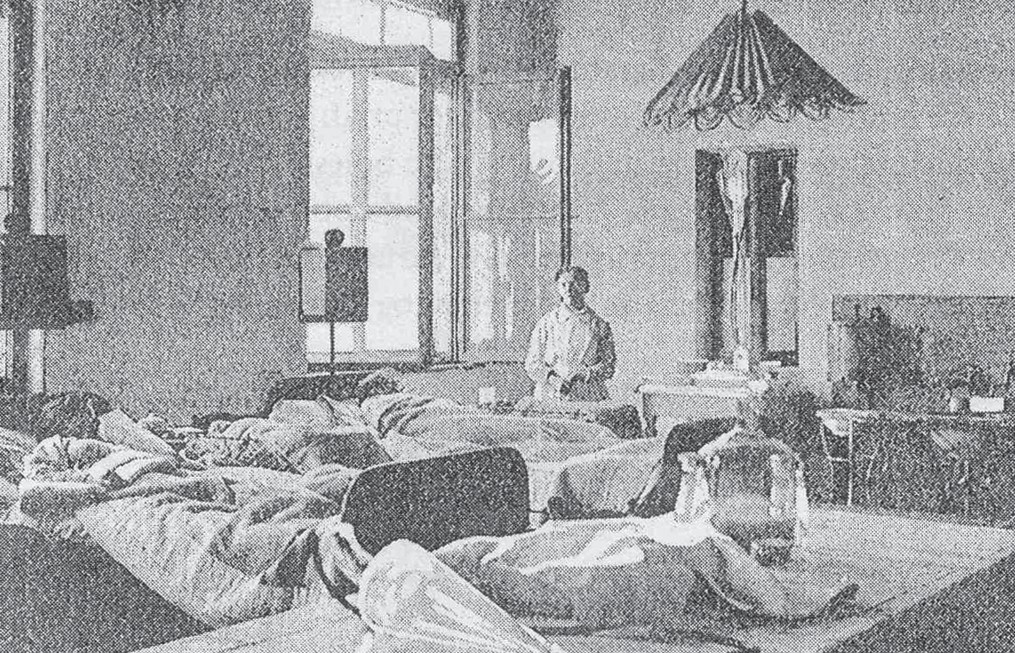
From 1881 to 1884 he worked as a cadet at the clinic operator Billroth, from 1884 until 1885 on the Clinic Carl V. Braun, then as an assistant in the Department Gustav V. Braun in Vienna. In 1892 habilitated Gynecology and Obstetrics, and in 1894 he became Chief Physician in Midwifery/Obstetric-Gynecology Department of newly established State (Regional) hospital – Landesspital in Sarajevo, where on the 5 February 1901 died (5, 6, 31) (Figure 10).
Besides, he gained fame in his works on obstetrics and is also responsible in particular for the repair of medical relations in that time, conservative Bosnia. He developed “Guidelines for midwives”, as a practical rulebook for physicians. where he described new ways to improve obstetrics it was a ten years project realized in correspondence between Vienna and Sarajevo hospitals.
PAVLE KAUNIC (1884-1960)
Pavle Kaunic (Paul Kaunitz) was born in Vienna in 1884. His father, a physician, gets his post at the Bihac Hospital in 1886, and Kaunic begins his primary education in Bihac, and completes it in Fojnica. Graduated at Gymnasium in Sarajevo. He enrolled at the Medical Faculty in Vienna and completed his studies in 1909 (5, 6, 35) (Figure 11). As a scholar of the Government of B&H he spent four years at the specialization at the Vienna Faculty of Medicine with professors: Weichselbaum, Koliska, Paltauf. After completing a specialist examination in 1913, he was appointed as assistant to the pathologist of the Sarajevo State Hospital.
During the First World War, he was engaged in the Military medical corps as a hygienist and bacteriologist and works to prevent and control epidemics in several cities of BiH. After the end of the war, he returns to the job of assistant pathologist at the State Hospital in Sarajevo, and in 1919 he was appointed as a general pathologist. In the year 1925, he was named the Head of the Institute for Epidemiology and Director of the Institute of Hygiene in 1929.
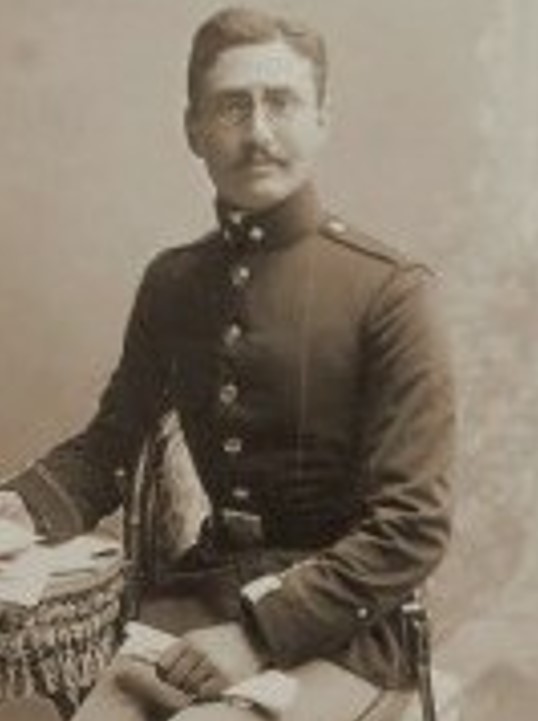
From this period, he will be remembered as a participant in the event embalming Prince Ferdinand and his wife Sophia at the „Konak“ Residence on June 28, 1914, following the assassination with the supervision of Colonel of 25th Military hospital in Sarajevo, Dr. Gotlib Arnstajn (35). The Sarajevo Assassination is one of the media and film’s most processed events in history and the theme of many texts of different scales and characters.
The Sarajevo assassination and the practical cause of the start of the First World War on July 30, 1914, with the announcement of the war from Austria to Serbia. This is because it was considered that Serbian extremists, led by Gavrilo Princip assassinated Franz Ferdinand and his wife Sofia of Hohenberg. The subject that has provoked a lively interest and has been subject to mystification for many years in various ways is whether the murdered princess of Sofia was possibly pregnant and carried Ferdinand’s baby in the womb, which was launched in 1924 by writer Borivoje Jevtic, close to the assassins and their circle (35).
Until the publication of Jevtic’s memories under the title „Sarajevo Assassination“, about the possibility that the 47-year-old Duchess was pregnant, there was no mention in the public. After the assassination, the Viennese press was full of bombing news, which was soon denied. It was written about the dozens of conscripts deployed in Sarajevo, about explosives on trees, government facilities … even under the table for a festive lunch at the Konak residence. The worst scenarios were considered, but there was no word about the possible pregnancy of unlucky Sofia, given the fact that earlier (in 1909) the top Viennese medical authorities strongly recommended that Sofia avoid the pregnancy in the future, given that those years she had a stillbirth. It is difficult to assume that Sofia did not follow the advice of her doctors.
However, crown proof that an undocumented Austro-Hungarian emperor was not pregnant represents the autopsy and embalming of the dead bodies of Sofia and Ferdinand, which took place between 28 and 29 June 1914. The key participant of this operation was the pathologist of the State Hospital (Landesspital), doctor Pavle Kaunic, who described the flow of the autopsy in 1958 to publicist Radivoje Papic and whose full text was published in the book by Izet Masic „The Roots of Medicine and Healthcare in BiH“ (5, 6). After the assassination, it was reported from Vienna that there will be a team of specialists in Sarajevo who will embalm the bodies of Sofia and Ferdinand. However, on the same day (June 28, 1914), the military courier handed to doctor Kaunic the letter by which Dr. Rihard Pollak urgently invited him to the Military Hospital. Dr. Polak asked Dr. Kaunic if he had the instruments and the chemicals needed to embalm the bodies of the killed. After confirmation, Dr. Kaunic was ordered to do all the preparations for autopsy and embalming with assistants Dr. Rihard Pollak and Dr. Edward Hecht.
The telegraphic order arrived from Vienna, so the operation started around 22:00 hours on June 28. First, Dr. Kaunic removed the blood from the blood vessels, and the blood vessels were washed with saline. The bodies are embalmed with the use of glycerin and formalin. The internal organs were treated separately, according to the custom that they applied in the Habsburg dynasty. After the section provided a thorough and detailed insight into the condition of the dead bodies of Sofia and Ferdinand, the team practitioner also carried out the necessary formalities prescribed by law.
A detailed report was compiled and the Death certificate was completed. Pregnancy was not mentioned even as an indication, because it was not present. Before the completion of the autopsy of Sofia and Ferdinand by Dr. Kaunic and his assistants in Konak were brought the Sarajevo painter Rudolf Valic and his wife Ludmila, which was the sculptor. Ludmila Valic took the dead masks from the face of the Duke and the Duchess, and Rudolf Valic first skirted an interesting multicolored tattoo of the forearm, created in Japan on Ferdinand’s journey around the world, and then made a portrait of the dead Duke. Later, on the basis of that sketch, Valic produced a portrait of Ferdinand in oil. Later, death masks were handed over to the Emperor and the Duchess’s children, and the tattoo drawing was taken away by the police (35).
On the 28th of August, 1914, Dr. Pavle Kaunic was awarded the Order of the Franciscan Order of Franz Jozef I. At the beginning of the Second World War, he was released from duty and returned to duty as a bacteriologist in the Military corps during the war. After the end of World War II, he led the Institute for Hygiene, and the Institute for Epidemiology, and works as a bacteriologist at the Military Hospital in Sarajevo. In 1949 he returned to the position of head of the Autopsy Department of the Clinical Hospital in Sarajevo.
In June 1950, he was elected as a part-time professor at the Department of Forensic Medicine at the Faculty of Medicine in Sarajevo, which he successfully ran until his retirement in 1956. One time, until the arrival of professor Zvonimir Kopac at the Institute for Pathological Anatomy, also lectured on this subject. He has published several scientific and professional papers, which he is known as the „Wiener klinische Wochenschrift“, No. 38: „Zur Kasuistic des Primary Trachealkarzionoms“, published in 1920, and the manual „Court Autopsy of a Newborn“ in 1954 (5, 6).
EMIL PRASEK (1884-1934)
Emil Prasek and his wife Branislava Cakzynska-Prasek (1887-1958) played a significant role in the development of health care services in Bosnia and Herzegovina between the two world wars (5, 6, 31) (Figure 12). Doctor Emil Prasek from the 1909 joint prosekture of Vilhelm hospital in Vienna with Professor Karl Landsteiner and Dr. Branislava Prasek worked with professor of pediatrics Clemens von Pirquet, at Children’s Hospital in Vienna.

Dr. Emil Prasek was already a distinguished researcher and scholar with European references. During the First World War worked as a doctor at the front as the bacteriologist in fortress Przemysl, where he had the opportunity to meet extreme manifestations of poor hygienic conditions and, consequently, a severe infectious disease that is resistant only succeeded in his own way.
In the winter of 1914 by the decree, he was sent with his wife to Sarajevo. In the world by building hospitals adapt prosector in the microbiology institute, where he worked as a bacteriologist and terrestrial prosector of State Hospital Landesspital after the departure of Dr. Roman Wodynski and mobilization of his assistant Dr. Pavle Kaunic.
His wife, Branislava at the same time working at the Department of gynecology and obstetrics, chaired by Chief physician Vladislav Mikucki, as a pediatrician. Dr. Emil Prasek 1915 went to Bosanski Brod to deal with outbreaks of cholera, typhoid, and then in other places in Bosnia and Herzegovina. Toward the end of the First World War, he becomes head of the Health Department following the departure of Dr. Bruno Curinaldi, who was retired, and Dr. Uros Krulj, who was elected as Minister of Health in Belgrade.
On that occasion presented, the so-called patents “The Sarajevo tunnel Ciklonization wagons” to combat typhus, using Cianohydrogen to destroy face and bed bugs. In 1921 Dr. Emil Prasek goes to the professor of Hygiene at Zagreb, at the invitation of his good friend Professor Drago Perovic, with whom he worked in Derventa at the beginning of the war, where he teaches pathological anatomy, bacteriology, and hygiene. In the academic year 1922-23, he was appointed to Dean of the Medical Faculty in Zagreb and was later reelected several times.
He was a regular member of the Health Council of Croatia and Slavonia, and the state controller for medications. The last days of his life he spent working at the First Yugoslav Pharmacopoeia. Dr. Branislava Prasek in Zagreb worked as a pediatrician and medical educator in several institutions: School Polyclinic Hospital Fund State Railways, the Department for Protection of Mothers and Children by Ministry of Public Health, etc.
HAMDIJA KARAMEHMEDOVIC (1883-1968)
Hamdija Karamehmedovic was one of the most educated physicians in Bosnia and Herzegovina. He was born in Trebinje in 1883, Grammar school graduated in Sarajevo in 1903, and Medical University in Vienna in 1909 (5, 6, 28, 24, 30-33).
In the year 1910, he was elected as a second physician in the Landesspital State Hospital in Sarajevo, and on the list of opposition deputies in the B&H Parliament (Figure 13). In 1918 he was elected to head the Department of Infectious Diseases in the Landesspital with the rank of Head physician.

For Minister for Health of Yugoslavia Kingdom was elected in 1921, and dismissed a year later. Since 1924 is again the head of the Department of Infectious Diseases of State Hospital (24), and since 1931 he worked as the Director of the State Hospital. In 1932 he retired. In retirement, he worked on a number of functions at the Association of physicians of B&H, and also was much engaged in the historiographical work at the Central Institute of Hygiene (Centralni Higijenski Zavod, today Public Health Institute of Deration of B&H).
As a professor of Persian language, Sakir Sikiric translated about 50 books from Arabic, Turkish and Persian languages, of which the most important book is “Mudgez al Kanun” “Excerpt of Canon”, written by Alauddin ibn Nafis in the 13th century. He was editor of the magazine “Life and Health”, published the “French School of Medicine” in 1951, “The grammatical rules of Turkish language” in 1955, and many other works.
He visited several university medical centers in Europe with the intention to bring together qualified medical personnel for the founding of the first Faculty of medicine in Bosnia and Herzegovina in 1914, but the First World War broke his idea to realized building up the first Medical University in former Yugoslavia (5, 6).
CONCLUSION
Some of the facts described in this article illustratively show that the health care system in B&H in the Austro-Hungarian period was very functionally organized. The same impression could be said also for the educational system organized by the Austro-Hungarian model at all levels of education in this part of Europe.
- Author’s contribution: M. gave substantial contributions to the conception or design of the work in acquisition, analysis, or interpretation of data for the work and gave final approval of the version to be published, and agreed to be accountable for all aspects of the work in ensuring that questions related to the accuracy or integrity of any part of the work are appropriately investigated and resolved.
- Conflicts of interest: none
- Financial support and sponsorship: None
REFERENCES
- Karahasanović Zdravstvena zaštita u BiH za vrijeme Turaka (1463.-1878.). U: Prvi kongres ljekara BiH, održan u Sarajevu 1977. godine, zbornik radova, str. 19-21.
- Jeremić Prilozi istoriji zdravstvenih i medicinskih prilika Bosne i Hercegovine pod Turskom i Austrijom. Beograd, 1952: 18-25.
- Mašić I, Konjhodžić Arapski liječnici praktičari. Medicinski arhiv, 1994; 48(2): 79-84.
- Pajević Dr. Mehmed Sami Šerbić (1847.-1918.), utemeljivač zdravstvene djelatnosti na području tuzlanske regije. Med Arh, 1997; 51(3-4): 117-118.
- Mašić I. Korijeni medicine i zdravstva u BiH. Avicena, Sarajevo, 2004: 228 pp.. ISBN: 9958-720-24-8.
- Masic History of medicine in Bosnia and Herzegovina. Avicena. Sarajevo, 2011: 61-168. ISBN: 978-9958-720-45-1.
- Masic Zdravstvo u BiH tokom osmanskog perioda. Avicena, Sarajevo, 1994: 40 pp.
- Masic I. First hospitals in Bosnia and Herzgovina. Avicena. Sarajevo, 2001: 128 pp.
- Hadžović S, Mašić I. i sar. Attari i nihov doprinos razvoju farmacije u Bosni i Hercegovini. Avicena, Sarajevo, 1999: 160
- Ibrahimagić-Šeper L, Mašić I, Muminagić S, Selimović I. Historijski presjek razvoja zdravstva i Dom štampe, Zenica, 2008: 260 pp.
- Mašić I. Srednjevjekovna arapska medicina. Sarajevo: Avicena. 296 pp. ISBN: 978-9958-720-40-6.
- Mašić I. Arabic medicine. Avicena. Sarajevo: 2001. 192
- Mašić I, Riđanović Z, Kujundžić Ibn Sina Avicena: život i djelo. Avicena, Sarajevo, 1995: 148 pp.
- Mašić I. Klasici arapsko-islamske medicine. Avicena, Sarajevo, 1995: 96 pp.
- Mašić Ibn al Nefis – život i djelo. Avicena, Sarajevo, 1996: 40 pp.
- Đuričić A., Elazar Pregled istorije farmacije Bosne i Hercegovine. Sarajevo. 1958. 44-46.
- Hadžović S. Farmacija i veliki doprinos arapske islamske znanosti njenom razvitku. Med Arh. 1997; 51(1-2): 47-50.
- Masic I, Dilic M, Solakovic E, Rustempasic N, Ridjanovic Why Historians of Medicine called Ibn al Nafis Second Avicenna? Med Arh, 2008; 62(4): 244-249.
- Skrbo A, Masic I, Skrbo S, Ramakic E, Zunic Bosnia Franciscans and Monasteries in Kresevo and Fojnica as Source of Scientific Bibliography. Mater Sociomed. 2017 Jun; 29(2): 149-154. doi: 10.5455/msm.2017.29.149-154.
- Skrbo A, Masic I. Influence of Arabian Pharmacy on Diseases Treatment During Ottoman*s Period in Bosnia and Herze Med Arch. 2017 Jun; 71(3): 219-225. doi: 10.5455/medarh.2017.71.219-225.
- Masic I, Skrbo A, Naser N, Tandir S, Zunic L, Medjedovic S, Sukalo
- Contribution of Arabic Medicine and Pharmacy to the Development of Health Care Protection in Bosnia and Herzegovina – the First Part. Med Arch. 2017 Oct; 71(5): 364-372. doi: 10.5455/ medarh.2017.71.364-372.
- Masic I. Contribution of Arabic Medicine and Pharmacy to the Development of Health Care Protection in Bosnia and Herzegovina – the Second Part. Med Arch. 2017 Dec; 71(6): 439-448. doi: 10.5455/medarh.2017.71.439-448.
- Masic I. Thousand year Anniversary of the Historical Book “Kitab al-Qanun fit Tibb” – the Canon of Medicine, written by Abdullah ibn Sina. Journal of Research in Medical Sciences. 2012 Nov; 17(11): 993-1000.
- Koluder-Cimic N, Masic I. The Development of Infectology in B&H, with Special Emphasis on the Development of History of Infectious Clinic, Clinical Center of Sarajevo University. Mater Sociomed. 2012 Jun; 24(2, suppl 1): 4-10. doi: 10.5455/msm.2012.24. s4-s10.
- Masic I. Arapska medicina. Avicena. Sarajevo, 1994; 58 pp
- Masic I. On Occasion of 800th Anniversary of Birth of Ibn al Nafis – Discoverer of Cardiac and Pulmonary Med Arh, 2010; 64(5): 309-313.
- Aganovic D, Masic I. History of Urology in Bosnia and Herzegovina. Chapter: “De Historia Urologiae Europaeae, 13”, Edited by Dr. Dirk Schultheiss. Drukkerij Gelderland, Arnhern, 2006: 19-33.
- Mašić I. Zemaljska bolnica u Sarajevu. Avicena, Sarajevo, 1994: 138 pp.
- Konjhodzic F, Simunovic The first operation the head and brain in Vakuf hospital in Sarajevo. Med Arh. 1978 Sep-Oct; 32(5): 325- 328.
- Mašić I. Prve hospitalne zdravstvene ustanove u BiH. Med Arh, 1994; 48(3): 139-143.
- Konjhodžić F, Mašić I. Osnivanje Zemaljske bolnice u Med Arh, 2004; 58(2): 12-30.
- Omerhodzic I, Masic I. Department of Neurosurgery, Clinical Center University of Sarajevo: Brief History and Current Achievements. Mater Sociomed. 2006; 18(1): 43-6.
- Mašić I. Sto četrdeset godina Turske civilne i Turske vojne bolnice u Med Arh. 2006; 60(2): 138-140.
- Ibrahimagić O, Mašić I, Ibrahimagić A, Tupković E, Smajlović Dž, Jakupović S. Čehinje i Poljakinje prve liječnice u BiH. Med Arh, 2002; 56(1): 49-50.
- Zujo Leksikon ljekara Sarajeva. Doktor. 2016 Juni: 16-19.
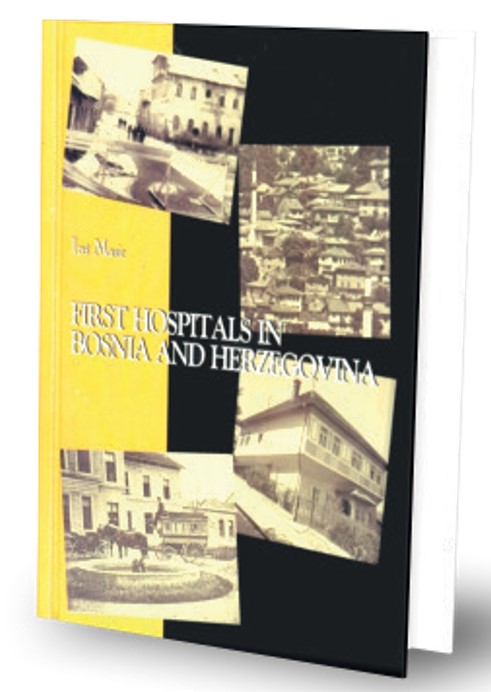

This article is published with the author’s permission.
Notice: The column is divided into three articles!
Masic: 150 Years of Organized Health Care Services in Bosnia and Herzegovina 1/3
Masic: 150 Years of Organized Health Care Services in Bosnia and Herzegovina 2/3
Napomena o autorskim pravima: Dozvoljeno preuzimanje sadržaja isključivo uz navođenje linka prema stranici našeg portala sa koje je sadržaj preuzet. Stavovi izraženi u ovom tekstu autorovi su i ne odražavaju nužno uredničku politiku The Balkantimes Press.
Copyright Notice: It is allowed to download the content only by providing a link to the page of our portal from which the content was downloaded. The views expressed in this text are those of the authors and do not necessarily reflect the editorial policies of The Balkantimes Press.
